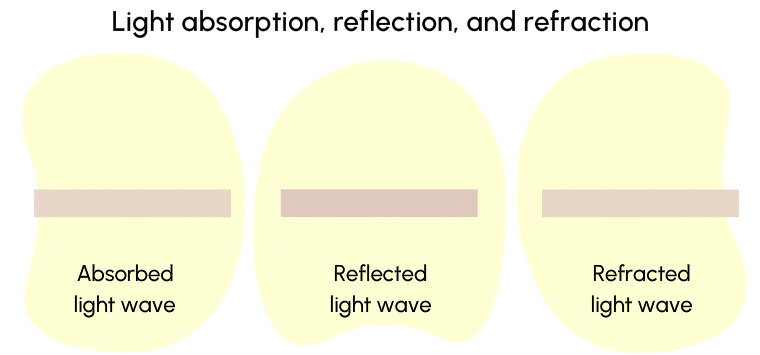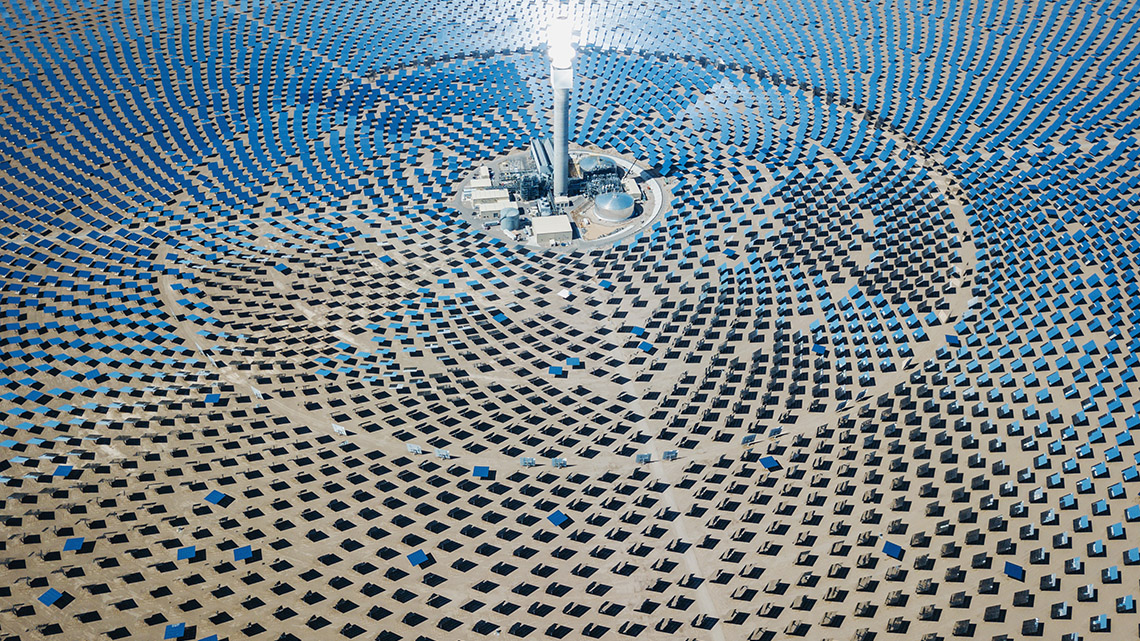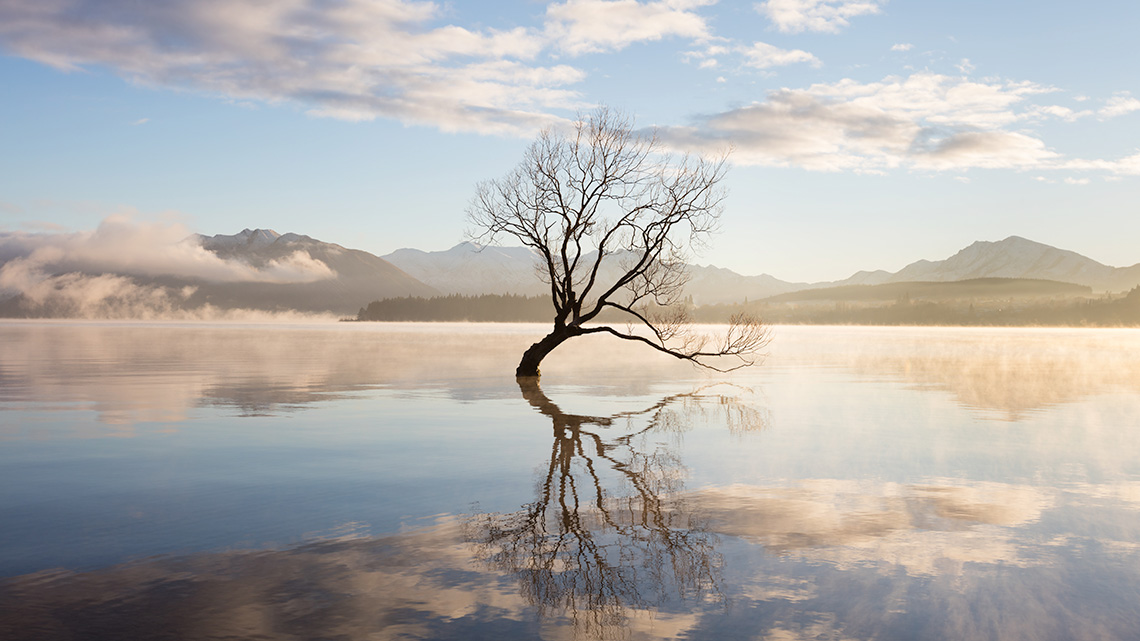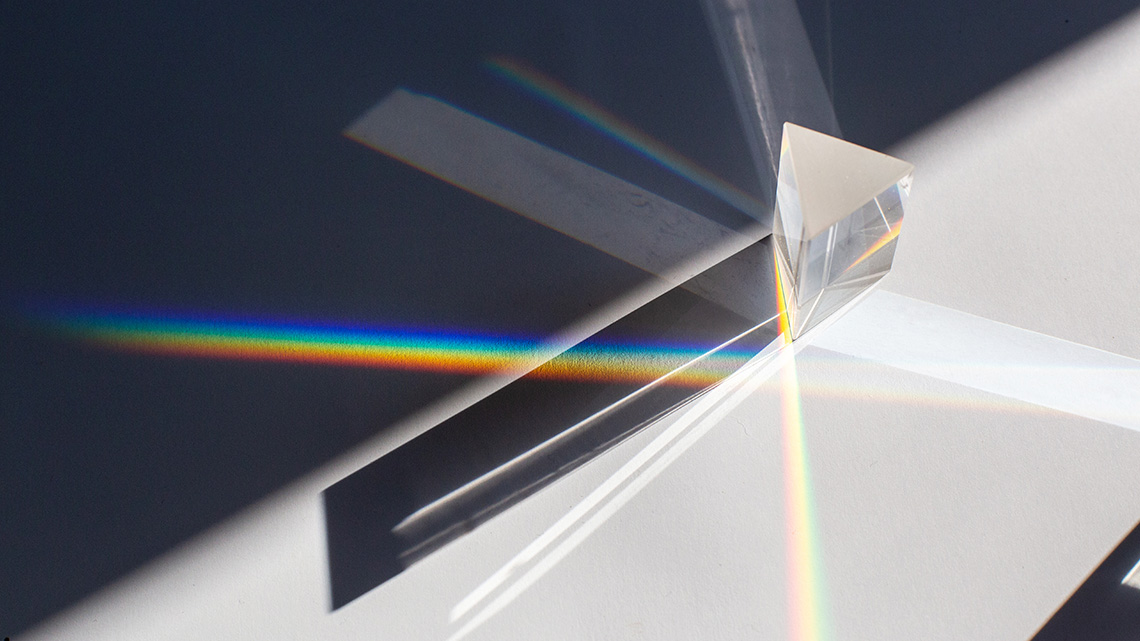Minds On
Where does light come from?
Natural habitats rely on light as a source of energy. The light gives plants and trees one of the ingredients they need to make food for themselves. The plants then provide energy for the animals that eat them.
People rely on light too. Farmers need the sun to provide light to grow crops and people turn on lights so that they can navigate around a dark room.
Light comes from a variety of sources both natural (from nature) and artificial (made by humans).
Press the following tabs to access descriptions of light and sources of light.
Energy that can be detected by the human eye and makes things visible. When light strikes a surface it is absorbed, reflected, or transmitted.
Naturally occurring sources of light like the sun, stars, and biochemical sources that do not require human interaction to create the light.
Human made sources of light like light bulbs are usually based on an electrical source for energy.
Action
Properties of light
The Sun is the greatest source of natural light. It provides light for people during the daytime, but it also provides people with a source of energy. Solar panels absorb light rays from the sun and convert light into electrical energy for people to use.
Did you know?
Sunlight
The distance from the Sun to the Earth is approximately 148 million km. That’s a long way for the light to travel!
Did you know that light travels in “straight lines” from the Sun towards the Earth?
Explore the following Turtlediary video entitled “How Light Travels” to learn more about how light from the Sun travels to Earth.
Consider how light travel is described in the video clip, then answer the following questions:
- How might you explain light travel using the terms “waves” and/or “rays”?
Record your response using a method of your choice.
Press ‘Hint’ to access one possible response.
Light travels in “waves”, and they come from the Sun through the air in straight lines known as “rays”.
Another important fact is that because the straight rays of light cannot “bend” to avoid hitting an object, they will be reflected, absorbed, or refracted by the object or material in their way.
Examine the following animation of how light rays will either be reflected, absorbed or refracted when making contact with an object.

For reflection, light rays can be pictured traveling towards an object labelled “reflective surface” and bouncing off to travel back in the opposite direction. For absorption, several arrows labelled “incoming light rays” travel towards an object labelled “absorbing material” and a few arrows labelled “outgoing light rays” are pictured passing through continuing in the same direction. For refraction, light ray arrows are pictured travelling upwards from the left towards a triangle labelled “glass prism” and out from the triangle in a downwards motion but still travelling towards the right.
Press the following tabs to access more detailed descriptions of the processes of light reflection, absorption, and refraction.

Light is considered to be “reflected” when its rays hit an object and bounce off.
Reflected light is what allows human and animal eyes to see, because the eye can only “see” objects when light reflects off them. For example, in the daytime, the light from the sun shines down and reflects off an object like a playground slide, making it visible.

Some materials soak up or “absorb” light rather than reflecting it, which means that when the travelling light rays hit these materials they will stop (instead of travelling through or bouncing off).
Materials that are not shiny or transparent are called “opaque” and they absorb the most light.

Light refraction occurs when light rays contact an object or material that is transparent (such as water or a glass prism), and the light rays “bend” or change direction slightly after passing through the object.
Hands-on science
Light refraction
In order to discover more about how light travels and examine some of these properties in Action, we will engage with specific parts of the Scientific Experimentation Process! In particular, we will using skills associated with the following steps of the process: Ask, Analyze, and, if possible, Conduct.
Check out this video to learn about the steps of the Scientific Experimentation Process.
We have already identified a question to ask: how does light travel in straight lines and what happens when light rays make contact with an object or material? You have learned about how light can reflect off of or be absorbed by certain objects, and also how light can change direction slightly when it travels through a material by way of refraction.
Next, we will observe a video clip and short experiment demonstration about light refraction in order to analyze the results. If possible, you may also conduct the experiment explored in the video if you have the necessary materials and a trusted adult to work with.
To begin, let’s observe the following experiment demonstration and video clip discussing how light refraction can be observed. Explore the following tabs to learn about the materials needed and experimental procedure for the “Light Refraction Through Water”.
If you are conducting the experiment, please perform the following safety check:
Safety
Before you begin:
If you do not have access to materials, access the “video demonstration” tab to explore the experiment in action. You can use the video to make your observations and draw your conclusions.
- a card or piece of paper
- marker or a thick pen
- arrows pointing in the same direction
- a clear drinking glass
- water
- Draw two arrows roughly 3cm long, one 2cm above the other, pointing in the same direction.
- Place the card with arrows approximately 2cm behind the empty drinking glass, and check that both arrows are visible through the other side of the glass.
- Pour water into the glass just above the level of the bottom arrow.
- Record what you notice about how the first arrow appears through the water.
Explore the following Teacher Power Hour video entitled “Light and Sound” to access the Light Refraction Through Water experiment. Please note that materials and procedure in the video may vary slightly from what is listed in the previous tabs.
Complete the Lab Sheet: Light Refraction Through Water in your notebook or using the following fillable and printable document. If you would like, you can use speech-to-text or audio recording tools to record your thoughts.
|
Materials needed |
|
Hypothesis – what do you think will happen? |
|
|
Procedure |
|
|
Observations *Remember observations can be recorded with pictures, numbers and/or words! |
|
|
Conclusions |
|
Questions |
Press the ‘Activity’ button to access Lab Sheet: Light Refraction Through Water.
Did You Know?
Solar power plants
In the following image, the mirrors, positioned around a central tower that contains water-filled boilers, reflect sunlight from the sky towards the top of the tower. The light is so hot, it boils the water, which creates steam to turn turbines and generate electricity.

Consolidation
Show what you know
Complete the following series of multiple choice questions to review your learning on the properties and different sources of light.

Describing light travel
Select one of the three ways that light can travel – reflection, absorption, or refraction – and prepare a written description or a labelled diagram that outlines what happens in the process.
You may record our response using a method of your choice, and make sure to check off the items on the following checklist while preparing your answer.
Light Description or Diagram Checklist
I have used the following specific vocabulary in my response:

Reflection
As you read through these descriptions, which sentence best describes how you are feeling about your understanding of this learning activity? Press the button that is beside this sentence.
I feel…
Now, record your ideas using a voice recorder, speech-to-text, or writing tool.